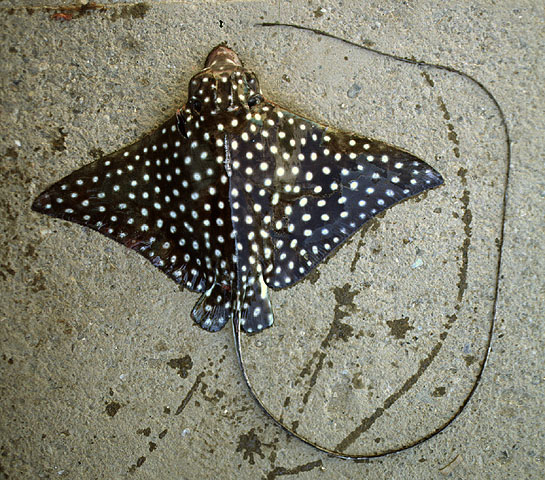| Aetobatidae (Pacific eagle rays) |
| 230 cm WD (male/unsexed) |
|
benthopelagic; marine |
| Eastern Pacific: from the Gulf of California to Peru, including Galapagos Is. (Ref. 130539). |
|
This large eagle ray is distinguished by the following characters: bluish black dorsal body with numerous white spots or ocelli, ventral surface mostly white; a moderately long fleshy rostral lobe; disc short and very broad; pectoral fins weakly falcate, joining head at level of eye and is separate from rostral lobe, the posterior margins moderately concave and free rear rips broadly rounded; rostral lobe moderately long and parabolic; large spiracles are dorsolateral, visible on dorsal view; mouth ventrally located, width narrower than preoral length; large nasal curtain, deeply notched centrally and with a curtain-like fringe; each jaw with plate-like teeth in a single row, with upper teeth transverse, lower teeth chevron-shaped; smooth disc without denticles or thorns; elongated tail, whip-like; small dorsal fin raked back, its apex broadly rounded, with free rear tip short; presence of 1 or more stings (Ref. 114953). |
| This inshore species in coastal bays and estuaries, to offshore occurs solitary or in large schools. It feeds mainly on bivalves, also shrimps, polychaetes and other fishes. Size usually less than 130 cm, size unknown at birth and when it matures (Ref. 114953). |
|
Vulnerable (VU); Date assessed: 08 February 2019 (A2d) Ref. (130435)
|
| harmless |
Source and more info: www.fishbase.org. For personal, classroom, and other internal use only. Not for publication.
